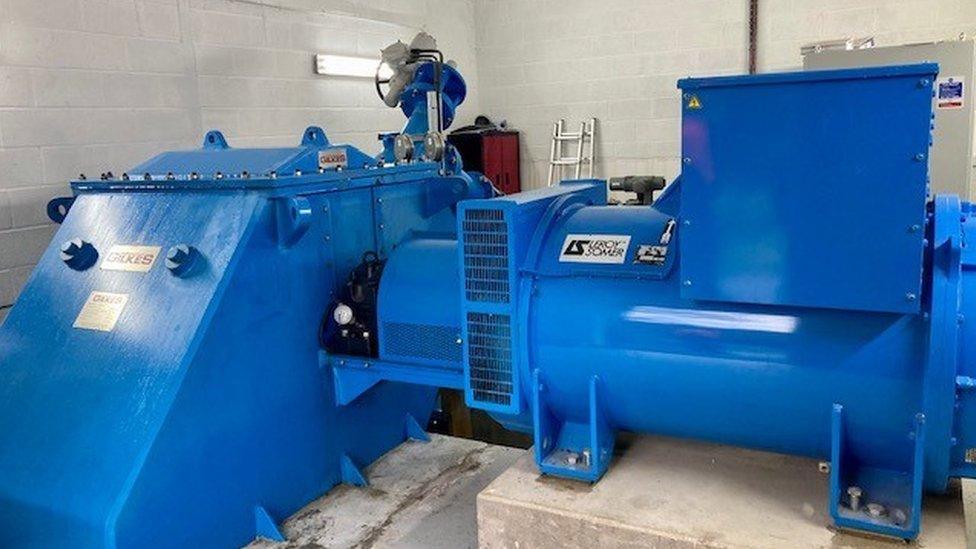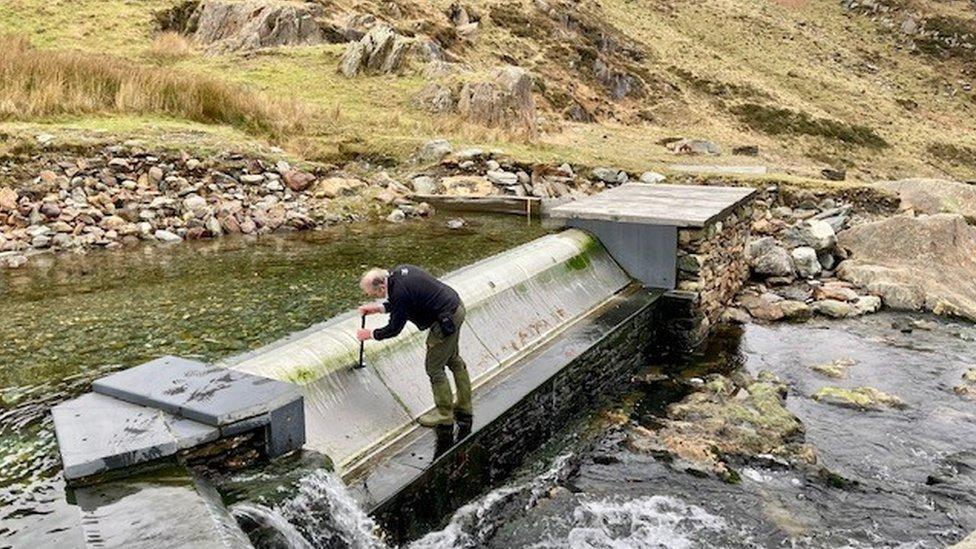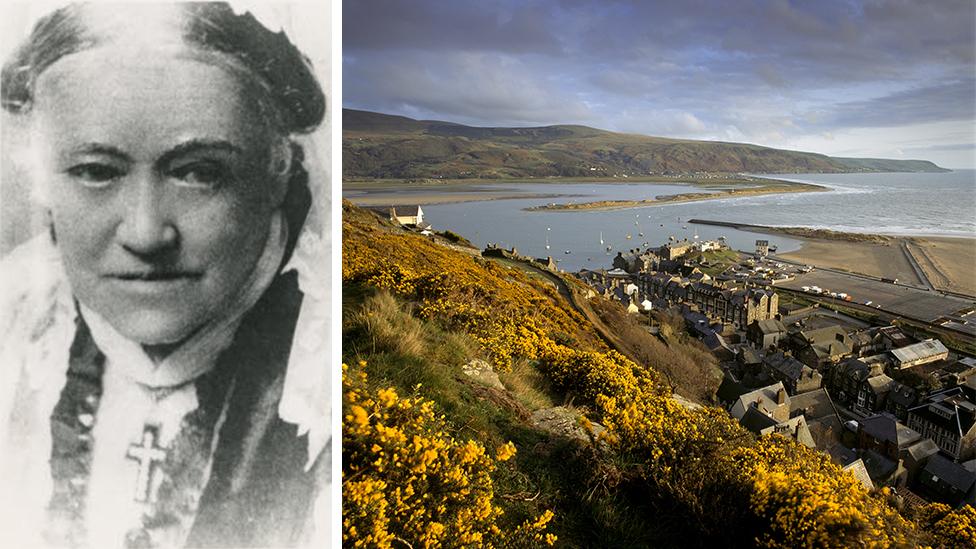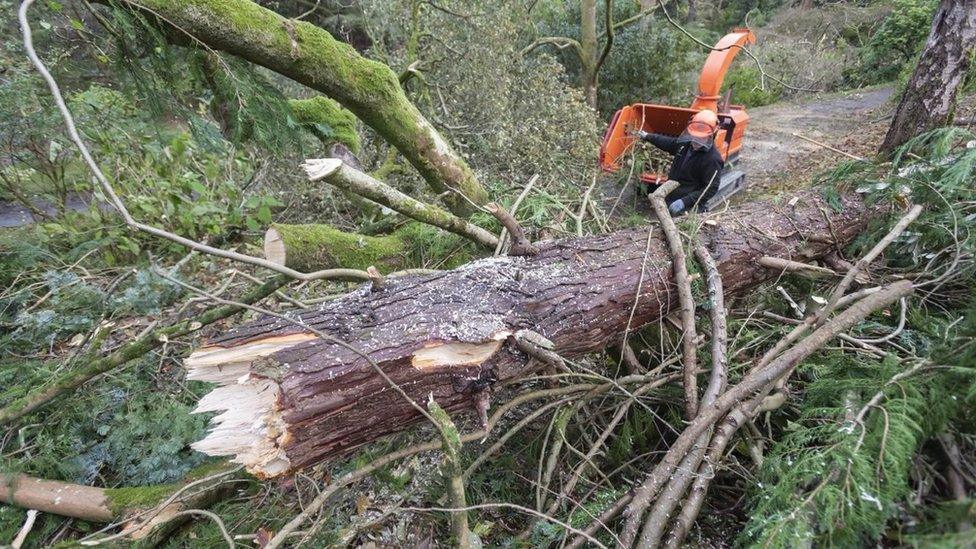Snowdonia hydro schemes reach production milestone
- Published

The National Trust is using the natural flow of water down mountains to produce renewable electricity
A renewable energy project in Snowdonia has produced 20 million kWh of energy over eight years.
That's enough energy to power 5,300 homes for a year.
The National Trust-run project hopes the turbines will help it reach a carbon zero target by 2030.
General manager Trystan Edwards said when the project started in 2013 it was new so they relied on outside expertise to get started. It's now helping others develop their own hydro schemes.

There are eight hydro turbines owned by the National Trust across Snowdonia
"We're not a company that has been involved in generating electricity, we're a conservation charity and so it was a very new departure for us," added Mr Edwards.
"So in that sense it was challenging trying to make sure we weren't going to build something that was detrimental to the habitat or the landscape.
"We put a lot of faith in the experts and what time has shown is that those experts were really close to the mark."
In total, the National Trust's group of turbines have produced enough energy to power 5,300 homes for a year, which it had predicted at the start of the project.
Mr Edwards said: "A lot of the electricity generated is exported to the grid which means we get income from the sale of electricity.
"That income is ploughed back into conservation work, keeping our building stock in good condition, keeping slates on some of our older buildings.
"This means we've been able to keep contractors and other local employment going.
"That's been a key part of the success story that we're keen to support."

The weir helps to divert some of the water flow towards the turbine
The hydros also provide an insight into climate change as energy production fluctuates according to the weather.
"The wettest month we've been able to record in terms of generation was when Storm Desmond came through in December 2015 and the driest period was when we had the start of the Covid lockdown in April and May 2020 - a really long, dry period.
"What we then see is a period of quite heavy rain coming in and sometimes at times of the year you wouldn't expect," said Mr Edwards.
"It's been interesting for us to look at the charts, look at the generation data and come up with our own analysis really of how it's impacting a farmed environment like this and how we need to react to that in terms of how we manage assets like hydros."
At the hydro site in Hafod y Llan the pipeline is buried in the hillside so there is minimal visual impact on the landscape.
The dam - or weir - among the nearby abandoned copper mines diverts part of the mountain river overflow to the turbine on the Trust's valley farm in Hafod y Llan.
Consultancy manager Paul Southall oversaw the Snowdonia project with the charity.
"There was lots of debate and discussions about it was the right thing, the right place," he said.
He believes now that the results achieved are "perfect".
"We couldn't really have done it any better or in any more aesthetically-sensitive way, both visually but also in an ecological and environmental sense.
"It wasn't just the what we've done, but the how we've done it.
"So following this, we go out and we've worked with two or three communities to develop their own community hydro schemes in the local area.
"We're looking at how farms can diversify and renewables is part of that mix.
"So in the broader sense it's the how we can teach, how we can share, how we can inspire people."

SLAMMED: The story of Wales’ transformation from rugby rejects to rugby royalty
STORIES FROM WALES : Documentaries for curious minds

Related topics
- Published12 January 2020

- Published2 December 2021
